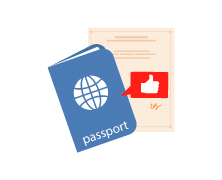We compared tuition and living expenses for international students in these two countries.
Tuition Fees
In 2017, Finnish universities introduced payments for Bachelor’s and Master’s programmes in English. The change applies to students from all countries outside the European Union and European Economic Area. “Introduction of tuition fees for non-European students was a necessary measure to develop education programmes in our country,” comments Savon Sanomat, a Finnish publication.
Admission to central Finnish universities started in December and available statistics show that 2017 undergraduate programmes in English have fallen out of favor with foreigners. Tuition fees for Bachelor freshmen in 2017 range from 4.1 to 12 thousand euro per annum. Master programmes cost up to 18,000 euro. For instance, University of Jyvaskyla charges 8 to 16 thousand euro per year, depending on programme.
Students will have to pay 10,000 and 12,000 euro at the Department of Business and Economics and Department of Mathematics, respectively. University of Turku programmes cost an average of 9,000 euro per year and the administration is prepared to reimburse one-third of the fee for strong academic performance.

© TSU
Tuition fees at the University of Helsinki, the most prestigious university in Finland, vary between 13 and 18 thousand euro per year. For example, a year of Master’s programme in Economics costs €18,000, while Computer Science will set you €15,000 back.
Haaga-Helia University (which also enjoys a robust reputation in Finland) charges €8,500 for a Master’s programme in Business Administration, and €9,500 for any Master’s programme in English, as well as Management in Restaurant and Hotel Business and Management of Sports and Entertainment Businesses.
Bachelor programmes in Finland take 3-4 years, Master’s require another two years. Finnish universities usually require 50% advance payment (before the start of the academic year) as a “booking” deposit.
Tuition Fees at Russian Universities
Bachelor programme fees in Russia start at 67,000 rubles (around €1,100). A growing number of universities provide Bachelor, Specialist and Master programmes in English. Foreigners can choose programmes in Russian because all universities offer theopportunity of learning the language besides mastering the core disciplines.
For instance, Bachelor course in Computer Science at Tomsk Polytechnic University will cost you €2,900-3,600 (180-230 thousand rubles) per year. MEPhI Mathematics programmes start at €3,000 per annum, just like Political Science at HSE. Tuition fees for the International Tourism programme at Baltic Federal University stand at €1,100, while RUDN Architecture will set you € 3,700 back.

© TSU
On-campus Master programmes cost an average of 160-180 thousand rubles per year (€2,600-3,000). SFU charges as low as €1,100 (73,300 rubles) for its Banking programme. MEPhI course in Secure High-Performance Computing Systems costs €2,200 per annum (140,000 rubles).
Moreover, every year Russian government extends 15,000 free spots at various universities to international students. All this promotes demand for Russian universities in other countries. In 2016 alone, the total number of international students who came to Russia went up by 17%. The share of European citizens spiked by 40%.
Living Expenses
Prospective students need to consider prices in the country where they plan to study. Besides tuition fees, they also have to foot accommodation, transportation, food, medical insurance and entertainment expenses. Finnish universities do not guarantee dorm accommodation to international students.
The number of students who would like to stay in dorms often exceeds dormitory capacity. If you are lucky, you can stay on campus for €160-340 per month. If not, you’ll have to rent a flat – prices depend on the town and region, but will be at least twice as high as dormitory accommodation. Medical insurance (with coverage of up to €30,000) is another mandatory expense item. Depending on the provider, it will cost €80-240 per year.

© HSE
Also students must have at least €700-900 per month of intended stay in Finland on their accounts for miscellaneous expenses. The whole amount must be in your account before the year starts, otherwise you won’t be granted admission.
In Russia, all full-time students are provided with dormitory rooms priced at 150-5000 rubles (€2.5-80) per month depending on the city. Rent in Russia will be more expensive: one-bedroom apartment in Moscow will cost you 30-40 thousand rubles (€500-680), prices in other cities will be 1.5-2 times lower.
Medical insurance policies in Russia are also mandatory for international students. In Moscow, yearly insurance will cost 6,000-9,000 rubles (€95-145), but many universities offer their own insurance programs. For example, HSE students can buy a university-issued policy for 4,500 rubles (€70). All living expenses in Russia (including transportation, telecommunications, food, entertainment and dormitory payment) amount to about 20,000 rubles (€325) per month.
Thus, there is a significant difference between the costs of education in Russia and Finland.
Tuition fees at universities around the world (full-time Bachelor programs, 2017):
|
University |
Tuition fees (p.a.) |
|
Durham University |
Upwards of €22,700 |
| Lancaster University |
Upwards of €19,400 |
| Sussex University |
Upwards of €19,400 |
|
Oxford |
€18,000-27,000 |
|
Cambridge |
€15,000-55,500 |
United Kingdom
Durham University
Upwards of €22,700
Lancaster University
Upwards of €19,400
Sussex University
Upwards of €19,400
Oxford
€18,000-27,000
Cambridge
€15,000-55,500
|
University |
Tuition fees (p.a.) |
| Washington State University |
$24,000-53,500 |
|
Harvard |
$56,000-70,000 |
|
Princeton |
$37,000-38,600 |
|
Stanford |
Upwards of $38,700 |
|
Berkeley |
Upwards of $35,800 |
USA
Washington State University
$24,000-53,500
Harvard
$56,000-70,000
Princeton
$37,000-38,600
Stanford
Upwards of $38,700
Berkeley
Upwards of $35,800
|
University |
Tuition fees (p.a.) |
|
Algonquin College |
Upwards of €12,000 |
| McMaster University | Upwards of €22,700 |
|
Trent University |
Upwards of €16,000 |
Canada
Algonquin College
Upwards of €12,000
McMaster University
Upwards of €22,700
Trent University
Upwards of €16,000
|
University |
Tuition fees (p.a.) |
|
Wittenborg University |
Upwards of €7,900 |
| Saxion University of Applied Sciences | Upwards of €7,900 |
Netherlands
Wittenborg University
Upwards of €7,900
Saxion University of Applied Sciences
Upwards of €7,900
|
University |
Tuition fees (p.a.) |
|
European University in Switzerland |
Upwards of €13,500 |
| Glion Higher Education Institute | Upwards of €27,000 |
Switzerland
European University in Switzerland
Upwards of €13,500
Glion Higher Education Institute
Upwards of €27,000
|
University |
Tuition fees (p.a.) |
| Stockholm University | €9,200-15,000 |
| Lund University | €15,000-30,000 |
Sweden
Stockholm University
€9,200-15,000
Lund University
€15,000-30,000
|
University |
Tuition fees (p.a.) |
|
Tomsk Polytechnic University (TPU) |
€1,700-3,600 |
|
Peter the Great St. Petersburg Polytechnic University (SPbPU) |
€2,300-3,600 |
| Ural Federal University named after the first President of Russia B.N. Yeltsin (UrFU) |
€1,850 |
| National Research Higher School of Economics (HSE) | €3,900-10,500 |
Russia
Tomsk Polytechnic University (TPU)
€1,700-3,600
Peter the Great St. Petersburg Polytechnic University (SPbPU)
€2,300-3,600
Ural Federal University named after the first President of Russia B.N. Yeltsin (UrFU)
€1,850
National Research Higher School of Economics (HSE)
€3,900-10,500



























































